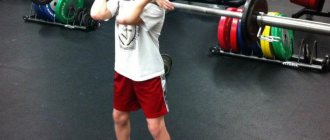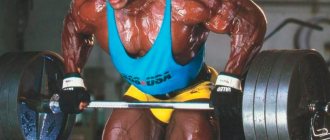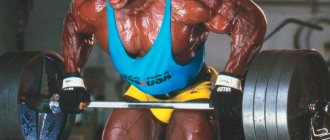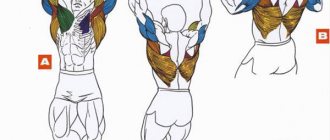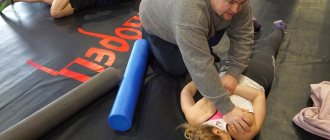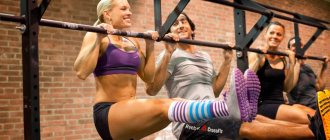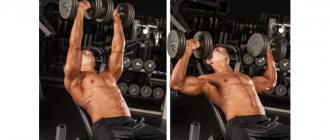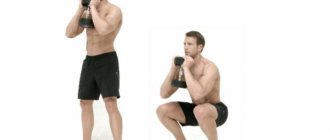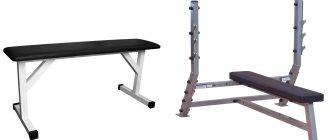© valeriya — stock.adobe.com
Share:
What you need
- Horizontal bar
- Cabinet
- Rope
- Jump rope
- Rowing machine
- Ball
CrossFit for children is a functional type of training that develops strength, endurance, flexibility and coordination, adapted to the athlete’s young age. CrossFit classes are not yet very common among children under the age of 10-11 years, but recently many parents are increasingly thinking that their children lack strength and functional training. This has become one of the fundamental reasons why children's CrossFit is gaining well-deserved popularity.
Of course, CrossFit for children is significantly different from classes for adults - fully formed, well-developed physically people, since there are a number of special age-related contraindications, for example, axial load on the spine or the achievement of anaerobic glycolysis. Before enrolling your child in functional training classes or any other section, you must consult a doctor about possible health hazards and find a sufficiently qualified certified trainer with extensive experience working with children .
CrossFit for children: benefit or harm?
The benefits of children's CrossFit, despite the diverging opinions of different experts, are still undeniable. Moderately intense exercise will help your child gain good physical shape by increasing the overall strength of the body by loading individual muscle groups and improving the functioning of the musculoskeletal system, as well as developing endurance through regular cardio exercise and improving the functioning of the cardiovascular system.
If you observe the intensity of the training process, recover correctly and train under the close attention of the instructor, functional training will not cause any harm to the growing body.
CrossFit will give your child the strength and functional base that will be an excellent basis for further athletic success in any sport, be it swimming, football, athletics or martial arts.
Why children need to play sports
In everyday life, the child mainly goes about his own business, which is not related to sports, and this means a large amount of time watching TV, playing on the computer, a passive lifestyle negatively affects the body and overall figure, because if the child moves little, that is, there is a chance that you will develop excess weight and fat deposits in the abdomen, legs, and sides.
Features of CrossFit for different ages
Of course, training volume and intensity will vary depending on age and level of physical development. Conventionally, children's CrossFit is divided into two age groups: children 6-7 years old and children under 10-11 years old (over 12 already belong to the age category of teenagers).
By the age of 11, the body becomes more adapted to strength work, so many trainers advise starting to work with small additional weights, and not doing exercises with your own body weight - this way the desired result will be achieved much faster.
Age group 6-7 years
CrossFit exercises for children 6-7 years old are less intense and forceful in nature and are essentially a more advanced version of general physical training for this age group.
The basis of the program for children aged 6-7 years is various types of cardio exercise, shuttle running, exercises performed with their own weight (push-ups, squats, etc.) and exercises for developing abdominal muscles. As for working with additional weights, it is permissible to perform the “rowing” exercise, working with vertical and horizontal ropes.
© Elizaveta — stock.adobe.com
Age group up to 11 years
CrossFit for children aged 8 to 10-11 years may be more anaerobic in nature. The program can include basic exercises with a barbell (bench press, biceps curls), or introduce relatively simple CrossFit exercises into the training process (burpees, jump squats, box jumps, throwing a ball against a wall, etc.).
To diversify the load, you can perform exercises with a sandbag, as well as various movements that require good coordination (handstand push-ups, pull-ups on the horizontal bar and on rings, lunges with your own weight). Of course, the weight of the burden should be minimal , since at this age the articular-ligamentous apparatus has not yet fully formed and is not ready for serious strength work.
© Aleksey — stock.adobe.com
How to exercise as a teenager correctly and safely for your health?
- The workout is based on working with moderate weights and your own weight.
- The number of approaches is selected individually.
- Exercises are performed in rounds or sets with a large number of repetitions: 15-20.
- Weight-bearing exercises that place stress on the spine cannot be performed.
- Much attention should be paid to warm-up and cardio exercises, as well as stretching. You should definitely alternate the load and training method, introduce all types of techniques (supersets, trisets and drop sets).
- Increase the intensity of the workout.
- Another very important point is load dosing.
Children's training program
CrossFit classes should be regular, with a systematic increase in intensity and the introduction of new exercises into the program. The load must necessarily vary; it would be advisable to divide the workouts into lighter and heavier ones. You shouldn’t do more than three CrossFit workouts a week, as the child’s body simply won’t have time to recover.
For example, a crossfit program for children for a week could be of a similar nature:
| Workout number | Exercises |
| First workout of the week (easy): |
|
| Second workout of the week (hard): |
|
| Third workout of the week (easy): |
|
Recipes for healthy eating
Accordion potatoes with bacon and cherry tomatoes in the oven
- 9.9 g Protein
- 13.1 g Fat
- 10.1 g Carbohydrates
- 207.3 kcal
40-50 min.
- #basil
- #bacon
- #second course
- #baking
- #potato
- #carrot
- #dinner
- #parsley
- #tomato
- #vegetable oil
- #rosemary
- #cream
- #cheese
- #dinner
- #garlic
Other recipes
Overweight in adolescent boys and girls
Most children who like to eat fatty and fried foods very often, as well as fast foods, become overweight! and in order to get rid of excess weight, parents think about how to lose weight for a child at home and are looking for measures to prevent the child’s weight from growing in the future; they give sets of exercises for all muscle groups to lose weight for the child!
We present to your attention a photo review of exercises, in pictures, that can be performed at home or on the street, and in the gym, which can be performed under the supervision of a trainer who will teach the child all the basics of how to correctly perform exercises with their own weight.
Psychological trainings for primary schoolchildren
Psychological exercises for training children of primary school age should work through their main internal problems and teach them to cope with them independently in the future.
Psychological training for children 7-9 years old should include:
- acting techniques;
- relaxation exercises;
- various diagnostic techniques;
- art therapy;
- role-playing games.
They will help you simulate different situations and play out possible behavior options.
"Mood Barometer"
To begin with, the game leader must show the children a real barometer and tell them what it is and what it is used for. After this, the guys must use their hands to “measure” their mood. For example, tightly clenched palms indicate a bad mood, and widely spread hands indicate a good mood.
"What I Love to Do"
This game allows children to learn something new about each other. One of the participants should, using gestures and movements, “tell” the children about any activity that he likes: reading, drawing, dancing. The rest look carefully and try to guess what activity is meant. After the showing participant finishes his “story,” everyone begins to guess. It is necessary to say at the end whether any of the guys guessed it. Next comes the next player.
"I like…"
The guys stand in a circle. The person starting the game should turn to the person sitting on the left and start talking with the phrase: “Kolya (Misha, Sonya, etc.), I like...” Then comes any compliment to the participant: “... your eyes / how you draw / how you dance.” And so on in a circle until it reaches the one who started.
"River"
We need to put the children in one column. From this moment on, they become a large river, which can spill into two so-called branches - two small rivers. To show how this river overflows, the presenter places two guys - leaders - at the beginning of the river and takes them in different directions. The guys behind them should stand behind one of the leaders, then behind the other - in turn. It is important to take into account the desire of each leader. This is how children learn to form subgroups.
"Princess Nesmeyana"
One of them sits on a chair placed in front of the children. Now he becomes “Princess Nesmeyana”, who needs to cheer up and make her smile. To do this, the guys take turns telling the “princess” about her merits - the beauty of her eyes, her ability to sing well, and so on.
"Support"
Children stand in the so-called magic circle. One of them ends up in its center. You need to keep your back straight and your legs together. The guys around him raise their hands to about chest level. The distance between them and the one standing in the center should not be large, because he begins to fall in any direction, and the guys must catch him. This game is based on trust - the ability to show it (falling) and justify it (children must have time to catch it and carefully put it in place).
"Good warmth"
Children stand in a circle and take each other's hands. This game exercise is to transfer spiritual “warmth” to each other. This is done with a gentle handshake. The first player passes to the player on the right, who passes to the other, and so on until the chain ends with the one who started. At first the game is played with open eyes, and then, at the beginning of the second round, the guys close their eyes.
How to help an 11-year-old child develop: attention, memory, speech
A child needs to be developed in three directions: physical, intellectual and creative. When a child goes to clubs and sections, he is in the company of people with similar interests, this improves his communication skills, expands his social circle and worldview. Joint games with parents will be useful. They bring you closer and allow you to build trusting relationships.
Exercises for children at home
Video exercises for children on legs, abs (stomach), arms, back for weight loss
This is just a small part of the physical exercises that can be performed at home with your own weight, which are the simplest and easiest. If you want to train your child correctly, then it is best to send him to a sports section where the child will feel the sports spirit! The trainer in the sections will always find an approach to the child and give him the necessary exercises so that his muscle strength and endurance increase significantly, and will also create a set of exercises (training program) with the help of which the child will improve his posture and muscle corset.
